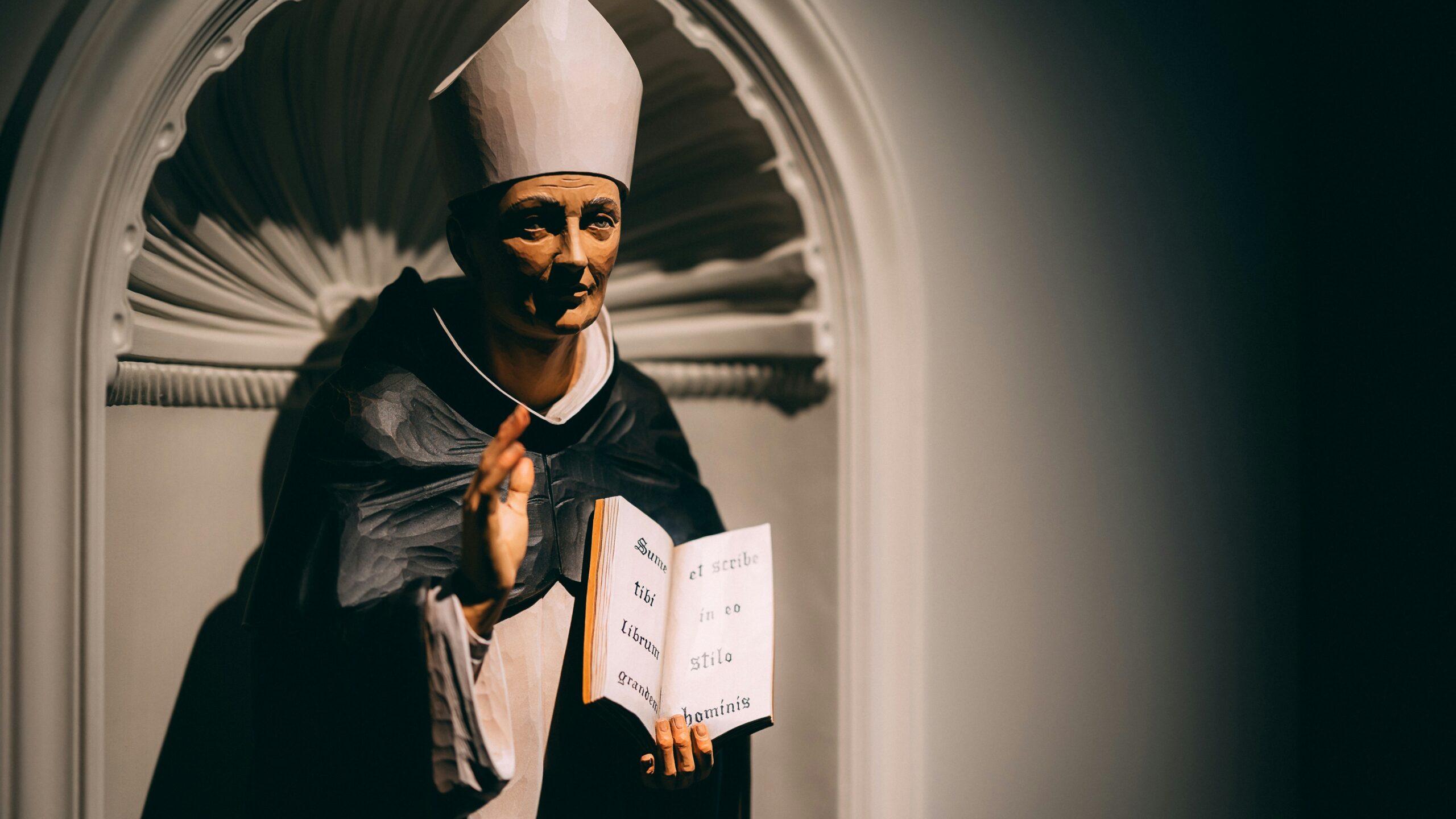It was not love at first sight. Seven hundred and fifty years ago, on March 7, 1274, the Dominican St. Thomas Aquinas died, but I first saw a page of Aquinas in 1979. I was in fourth grade. My mom didn’t want me rummaging through her old boxes in the attic, so when she was out of range, I did just that. In her books from Seattle University, I found An Introduction to Thomas Aquinas by Anton Pegis. I opened it and read, “Is theology a science?” I continued reading for about two minutes. The paragraph I read was written with short words, each one I knew, but the combination of these words was utterly incomprehensible to me.
My second failed attempt to read St. Thomas was at Boston College when I was a senior. The class might as well have been taught in Greek, given all the unfamiliar vocabulary used, so I stopped auditing the graduate course after a week. To use the words of Winston Churchill, Aquinas was to me “a riddle wrapped in a mystery inside an enigma.” I don’t blame the teacher; it was me.
The third time was the charm. Lao Tzu said, “When the student is ready, the teacher will appear.” The teacher who appeared was Ralph McInerny. Alasdair MacIntyre said that McInerny was “the most important philosopher who has ever taught in the Notre Dame philosophy department.” I was assigned to be his teaching assistant in “Thought of Aquinas.”
He is the common doctor of the Church and a spiritual master par excellence.
The more McInerny talked, the more Aquinas made sense. I had no clue how faith and reason could be related to each other. I knew I was Catholic, and I knew I loved to learn, but what these two things had in common was a mystery to me. Ralph introduced me to the view of St. Thomas. He taught that faith and reason are compatible because God is the ultimate author of both the book of nature (reason) and the book of faith (revelation). God does not contradict himself. Professor of Mathematics at Oxford University John Lennox made a similar point about the false choice between faith and reason: “What I am amazed at is that serious thinkers today continue to ask us to choose between God and science. That’s like asking people to choose between Henry Ford and engineering as an explanation of the motor car.”
Aquinas, Ralph said, is particularly important today as both contemporary secular rationalists and contemporary religious fundamentalists agree that faith and reason are necessarily in opposition. They want to force us to choose either faith alone or reason alone. St. Thomas rejected these false alternatives. He proposed instead reasonable faith and faithful reason. Although Ralph has now gone on to his eternal reward, you can still read the book we used for this course, A First Glance at St. Thomas: A Handbook for Peeping Thomists.
Why did I learn to find St. Thomas so compelling as a model? Why is there a rise in interest in Aquinas among young people? Thomas was a stellar example of an intellectual because he combines the best of every tradition known to him, from Greeks like Aristotle to Jewish thinkers like Maimonides, from Muslims like Averroes to Western Christians like Augustine, from Roman Stoics like Cicero to Eastern Neoplatonists like Pseudo-Dionysius. Thomas knew and lived by the adage, “Every truth, by whomsoever spoken, is from the Holy Spirit.” Aquinas writes clearly. He avoids the straw man fallacy by presenting the views of those with whom he disagrees in persuasive ways. He draws on the best scientific knowledge available to inform his views. He is the common doctor of the Church and a spiritual master par excellence.
St. Thomas is a great model of learning from others. If you want to be a Catholic intellectual, I’d encourage you to find your own spiritual master, someone like Augustine of Hippo, John Chrysostom, Catherine of Siena, Blaise Pascal, Hildegard of Bingen, Teresa of Avila, John Henry Newman, Thérèse of Lisieux, Edith Stein, John Paul II or Benedict XVI. Sir Isaac Newton said he saw further by standing on the shoulders of giants. We will be able to see further and make faster progress in the intellectual life by gaining a penetrating understanding of the thought of a spiritual master. Every Catholic intellectual can benefit from having a spiritual master as a firm foundation and model for the intellectual life. As you read great minds in the vast and diverse Catholic intellectual tradition, one or another may resonate with you. Your own intellectual inclinations, your own questions, your own habit of mind may especially attract you to the beauty of a great master in the Catholic intellectual tradition.
To have a spiritual master is not to become an intellectual slave. I have questions that Thomas simply did not explicitly address, for example about the development of doctrine. Moreover, I think Thomas was wrong about the Immaculate Conception, wrong about delayed hominization, and wrong about how human reproduction takes place. Only Jesus is the perfect spiritual master. But I couldn’t agree more with the words of Pope St John Paul II: “The Church has been justified in consistently proposing Saint Thomas as a master of thought and a model of the right way to do theology.”
Try reading Thomas. You might fall in love too.
